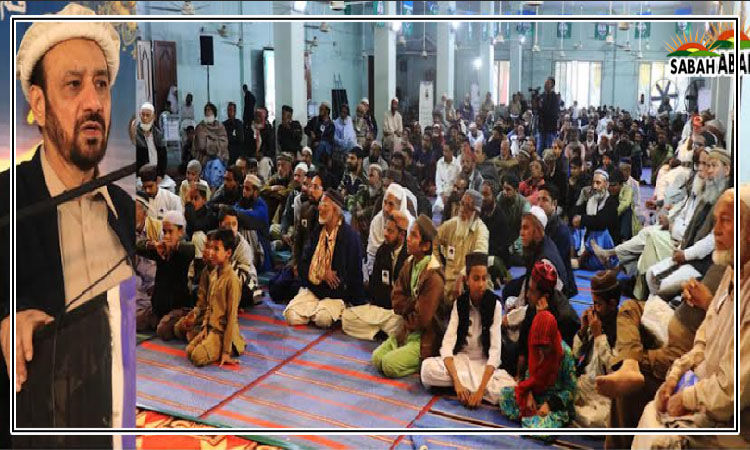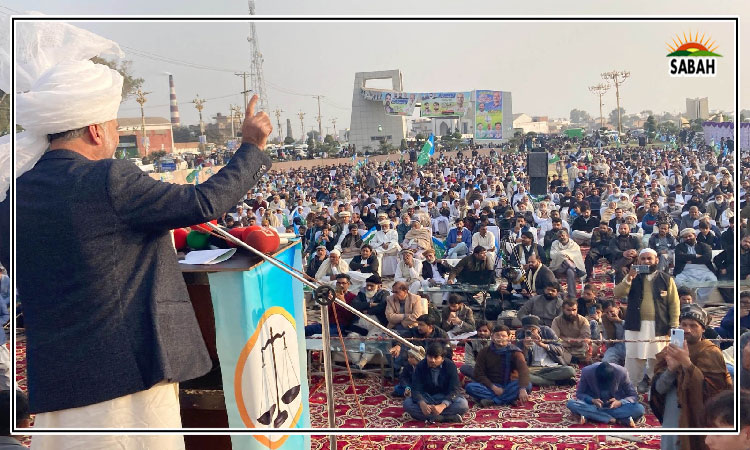Opinion From rhetoric to reality … Raza Hussain Qazi
It has been one year since the apocalyptic floods of 2022 wreaked havoc on Pakistan as a result of what was described a monsoon on steroids by the UN secretary-general.
The calamity left a third of Pakistan under water and caused widespread devastation, besides killing over 1,700 people, displacing 7.9 million and causing $30 billion worth of damage to the economy. Over 1.5 million hectares of crops were wiped out; more than 2.0 million homes were partially damaged or completely destroyed, and over 1.0 million livestock perished in the flood waters.
The unprecedented devastation happened during the most turbulent times when Pakistans economy was already struggling because of debt repayments, political uncertainty, a balance-of-payments crisis, and the rising inflation fuelled by pressures such as post-Covid-19 supply chain disruptions and the war in Ukraine.
The situation in Pakistan in the early phases could not get sufficient coverage in the international media. The response by the global humanitarian actors largely remained lukewarm, distant and insufficient. In many ways, the support which was pledged in the consecutive emergency appeals is far from actual realization.
Millions of men and women and infants and children affected by the floods are still struggling with displacement, and lack of access to safe water, adequate food, shelter, health, and essentials. On the top of that, the ever-rising inflation in the country has further exacerbated the ordeal of the affected communities that are now experiencing acute food insecurity.
Affected women and children in Sindh and Balochistan face a heightened risk of malnutrition, dehydration, and water-borne diseases. Similarly, hundreds of thousands of children (especially girls) are at high risk of being permanent school dropouts.
Last year, the Global North diaspora, a few international non-governmental organizations, and welfare networks were seen at the forefront of the humanitarian response, carrying out most of the charity work and voicing concerns about the flood situation in Pakistan. It was also quite surprising to see that a few international organizations outperformed institutional donors. Some welfare organizations were quick to reach the people in dire need and worked hard in the affected areas.
There is no doubt that affected communities across the country have yet again shown resilience and generosity and worked on a self-help basis to support the flood-relief response. The active role of the locals in charity has been a hallmark of Pakistani society in times of natural disasters. Yet, the country needs a well-coordinated strategy to cope with such a mammoth climate catastrophe.
Even though the government has worked hard to ease the suffering of flood victims, it has failed to establish a well-integrated mechanism among the key stakeholders: humanitarian actors, donors, civil society, diaspora, government and vulnerable communities.
For the past 20 years, the country has consistently ranked among the top 10 most vulnerable countries on the Climate Risk Index. The catastrophic floods have further exposed the vulnerability of communities to climate change. Against this backdrop, it is significant to conduct a meaningful stock-take for mid-course correction.
What makes the international humanitarian architecture response and institutional donors fall short of meeting the real needs on the ground? Do we have any coordination gaps that need to be addressed at various levels? The Pakistani diaspora played a proactive and crucial role and a few INGOs were leading the response, so what makes these networks so effective? What have we learned from the 2010 and 2022 floods in terms of policy and plans?
We are witnessing the onset of El Nino, the infamous climate pattern that poses renewed threats to the world at large and vulnerable nations in particular. It is known for unleashing heat surge and moistures that could trigger extreme weather events. There is a strong likelihood that we may experience something unprecedented similar to the 2022 floods. The timing could not be direr when the affected communities are still in the relief and recovery phase while families are waiting for government support to rebuild their lost homes and livelihoods.
The impending situation calls for robust initiatives on building resilience which can ensure that vulnerable communities are less exposed to the ravages of looming climate shocks and better prepared whenever disasters strike. The most critical is the countrys National Adaptation Plan (NAP).
The development will arrange crucial finance to fund adaptation projects that can help build ecosystem resilience through nature-based solutions (NBS) on the ground. This needs to be complemented by a national loss-and-damage framework backed by an inclusive and informed assessment of the Loss and Damage across the communities. The local loss-and-damage lens needs to be focused on resilient infrastructure, agriculture, early warning systems, and industry.
Drawing lessons from the floods and realizing the insufficiency of the international humanitarian response, we need to find long-term solutions to the challenges if Pakistan is to build back better. Similarly, there is a need to work together on climate emergency and the Sustainable Development Goals (SDGs) under a new unified strategy with harmonized plans, policies and projects to deliver significant progress on both agendas more effectively.
The dire situation demands that world leaders apply a far-reaching, forward-looking, action-oriented and comprehensive response to the global challenge of climate change. It is high time the UN, humanitarian actors, institutional donors and multilateral development banks included climate considerations into their strategies, policies, and plans. Climate disasters are not going away, so the most vulnerable and impacted want rhetoric to translate into reality.
The writer is a climate governance expert and works for global
development organizations in the areas of research, advisory, policy analysis and legislative reforms.
Courtesy The News












